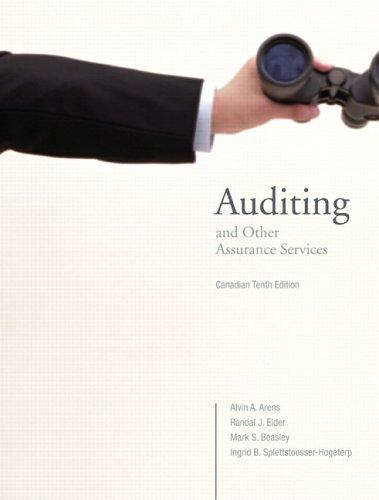Question
Performance Apparel Inc. (PA) is a retailer of sports apparel and footwear. PAs operations are based in Beaverton, Oregon, with retail stores located throughout the
Performance Apparel Inc. (PA) is a retailer of sports apparel and footwear. PAs operations are based in Beaverton, Oregon, with retail stores located throughout the country. In an effort to motivate certain members of senior management to execute consistently with PAs long-term financial performance plan, it decided to issue performance-based restricted stock units (RSUs) on January 1, 2014. RSUs are a form of compensation offered by an employer in the form of company stock. These shares of company stock are restricted in that they vest only after certain conditions (restrictions) are met. The shares are earned or vested based on a vesting schedule consistent with the satisfaction of these conditions. Vesting schedules are specific to each award and can be based on various conditions such as service (remaining with the employer for a certain period of time), performance milestones (such as meeting sales goals), or a combination. These RSUs cliff vest (shares vest at a point in time) on the basis of continued employment after three years, with the number of RSUs earned and issued at the end of the three-year vesting period, if any, dependent on two performance conditions: 1. Three-year average organic revenue growth. 2. Three-year average operating margin. Since PA has not previously issued these types of awards, it does not have knowledge of the relevant accounting literature and guidance on how these contingently issuable shares should be accounted for in their diluted earnings per share (EPS) calculation. Accordingly, as PAs external auditor, management has asked for your assistance with its financial statements as of and for the year ended December 31, 2014.
Required:
As of December 31, 2014:
1. Please provide me with the codifications for this problem
2. What is the three-year average organic growth rate that PA should assume in determining the number of potentially outstanding dilutive awards for purposes of calculating diluted EPS?
3. What is the three-year average operating margin that PA should assume in determining the number of potentially outstanding dilutive awards for purposes of calculating diluted EPS?
4.To Dilute or Not to Dilute?
Scenarios:
For the year ended December 31, 2014, organic revenue increased 10 percent.
For the year ended December 31, 2014, the operating margin was 40 percent.
For the year ended December 31, 2014, organic revenue increased 20 percent on average the previous three years.
For the year ended December 31, 2014, the operating margin was 50 percent on average the previous three years.
Step by Step Solution
There are 3 Steps involved in it
Step: 1

Get Instant Access to Expert-Tailored Solutions
See step-by-step solutions with expert insights and AI powered tools for academic success
Step: 2

Step: 3

Ace Your Homework with AI
Get the answers you need in no time with our AI-driven, step-by-step assistance
Get Started


